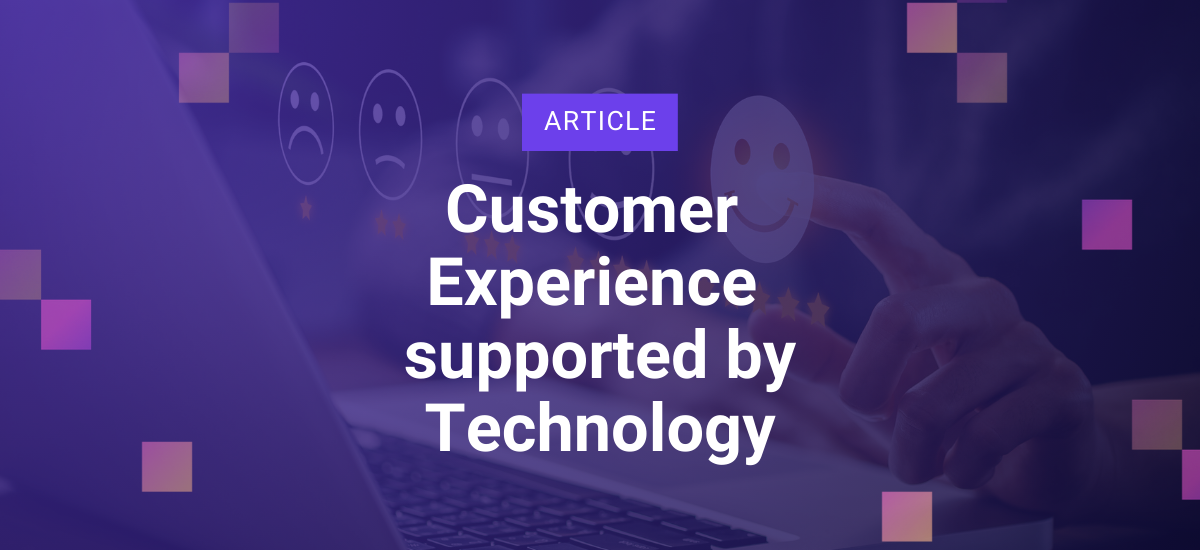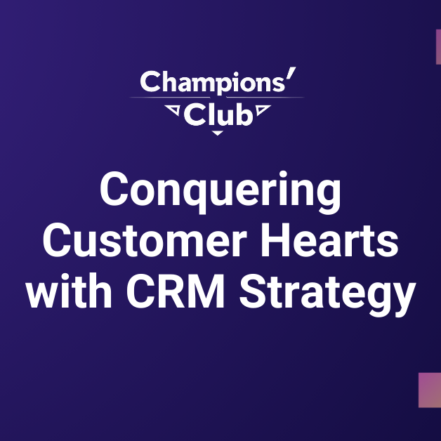Nowadays, the online world dominates most areas of our lives. Remote work, remote meetings with friends, entertainment such as Netflix, Spotify, omnipresent social media and, first of all, online shopping. All of this makes us consumers to, on one hand, want the greatest possible freedom to find the right products for us on our own and on the other hand, we are overwhelmed with so many choices that we expect spot-on, personalized recommendations.
That is quite a challenge for marketers. It turns out that activities related to the appropriate customer service or basic knowledge about the consumer’s behavior during shopping are not enough. What should be done to make the customer not only loyal, but also become a kind of brand ambassador and evangelize others about the brand? Customer Experience Management appears as an answer to this question.
Customer Experience Management – what is it? Definition
Customer Experience Management (CEM or CXM) is the collection of all possible data about a customer’s interactions, analyzing them and practicing responding to actions during the customer journey.
Customer Experience Management is especially important for brands that consumers encounter and interact with at multiple points or channels – on their website, social media profiles, Web Push notifications or emails.
Customer Experience Management strategy. What should it look like in practice?
Let’s start with how it should not look like.
Let’s imagine an online store where shopping can be done through a website and a mobile application. On the website we can find product recommendations, but they offer us products that we have already bought, sold out or in the wrong size. On the mobile app, users encounter some issues, which they point out in comments under social media posts. The company, on the other hand, decides to hide these comments. The emails received are mostly sales emails, inconsistent with the social media communication strategy. Sounds familiar, right? That’s why we suggest how to properly manage customer experience.
5 ways to Customer Experience Management in your company
1. Take care of 360 degrees profile
If you want to create and coordinate consistent communication with a customer, you have to cope with the problem of so-called data silos. This means that information from different touch points and from different departments in your company cannot exist in isolation from each other.
It is extremely important to create a Single Customer View (often called a 360-degree profile) which integrates all information about the user – his contact data, behavioral data or transactional data.
Consistent and effective communication requires taking care of an omnichannel, which is a multichannel approach to sales that focuses on providing a problem-free customer experience, regardless of whether the customer is shopping online or from a mobile device, a laptop, or in a physical store. It’s important to bring data from every channel into one system, allowing us to create a unified view of the consumer and holistically analyze their behavior.
Using a 360-degree profile, we can:
- apply hyper-personalization and respond with products fitted to the user’s actual needs
- learn how to improve the customer experience at specific points in the customer journey and thus build engagement and loyalty;
- understand what our customers want and expect from us;
- make better decisions faster, thus adapting to the dynamically changing environment and new trends;
- create consistent and customized communication in many channels simultaneously (omnichannel) without wasting time and resources on misguided campaigns.
2. Listen to user feedback
In Customer Experience Management, listening to customer feedback and responding to it quickly is the key. While asking for feedback seems quite simple in the offline world, in the online sphere it requires some effort. In this case, it is worth considering surveys that can be personalized and delivered to the user in real time. We should survey opinions not only after the customer’s purchase (it’s important to ask “freshly” about satisfaction with the purchase process), but also after some time to find out if and how their opinion changes. Another option is to create an automated scenario that asks the user for feedback after a specific interaction through a message using a chatbot.
It’s also a good idea to measure the loyalty of our customers through NPS (Net Promoter Score). To do that, you need to collect answers to a key question: Using a scale from 0 to 10: How likely is it that you would recommend [brand] to a friend? The answers are divided into 3 groups: promoters (scores of 9-10), indifferent (7-8) and critics (0-6). Depending on the rating given, for example, with a 10/10 we can ask them to recommend us on social media, and with a 3/10 we can refer the customer to the service department and investigate the reason for dissatisfaction.
3. Get to know your employees’ perspective
Numerous studies show that there is a strong link between employee experience and customer experience. Companies with the best customer experience focus on getting to know the perspective of their employees (known as employee experience). Increasing employee’s level of satisfaction and job satisfaction will translate into the end result offered to the consumer. It’s worth looking at workforce management and automating some of the internal processes.
4. Analyze data
At what point do your shop visitors abandon the shopping cart? On which pages do they abandon their visit? Analyze the data collected in the 360 profile and find critical points in the customer journey. Check the results of your campaigns and compare them to market benchmarks. Consider what you can change to make interactions with your brand more friendly. Studying your customers’ behaviors will help you significantly improve key metrics – from open and click rates to increases in conversion, loyalty or retention.
Proper data analysis will also help you in customer segmentation. For example, in the campaign for Taniaksiazka.pl, together with the Glosel team, we defined segments according to communication channels with particular emphasis on the most loyal customers.
Such an approach supports the creation of consistent and adequate marketing communication and thus strengthens customer relationships.
5. Use a tool to improve Customer Experience Management
You can accomplish all of the above with the right technology.
For the purposes of this article, let’s call this area “MA/CDP” – Marketing Automation/Customer Data Platform. It is a technology (platform, tool) that:
- aggregates customer data and behavioral data from multiple sources;
- comprehensively manages communication with customers through many channels (www, mobile, email, SMS, Web Push, call center, online advertising);
- automates management of this communication, enabling its full personalization;
- has built-in analytics of the above activities.
Many Customer Data Platform type systems have modules allowing creation of personalized surveys, implementation of Chatbot and creation of numerous automatic scenarios based on these functionalities. However, it is important that the chosen technology is adjusted to the needs and specificity of business. Only this way you will use its full potential and will be able to properly manage customer experience.
Customer experience management training
You already know that good customer experience management is influenced both by access to the full customer profile (the so-called 360 profile or Customer Single View), researching users’ opinions e.g. through automated scenarios with the use of Chatbot, getting to know your employees’ perspective or analyzing data from various sources – your own and market benchmarks. You also know that Marketing Automation and Customer Data/Experience Platform tools can help you in that.
Do you want to deepen your knowledge about Customer Experience Management and related technologies? Wondering which technology could work for your company? Get in touch with us and learn about our expert recommendations.































